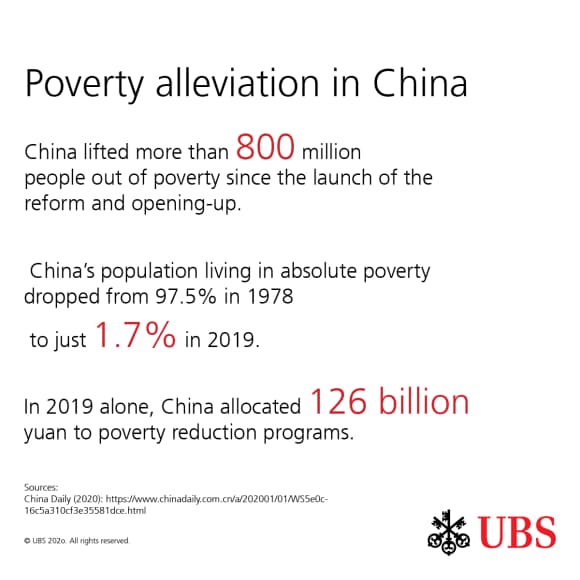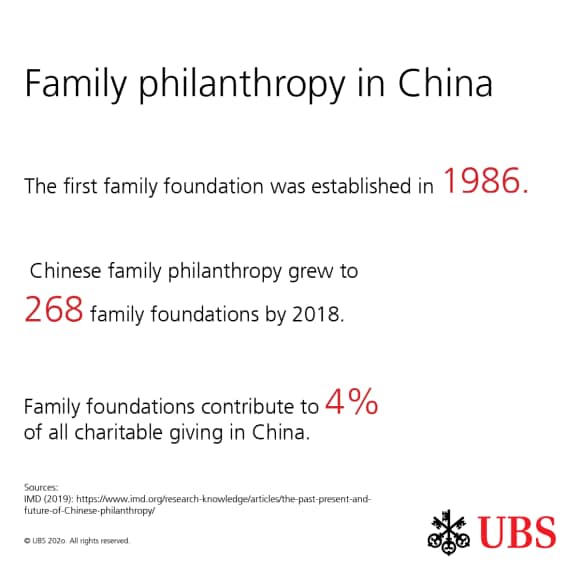Chartering a bold course
A massive earthquake hits China, a tragedy which resulted in a real turning point in the rise of philanthropy.
2008 – a massive earthquake with a magnitude of 8.0 hits the central region of Sichuan, China. Whole villages and mountain towns were destroyed, and millions of people lost their homes.
The changing face of philanthropy in China
The changing face of philanthropy in China
The tragedy marked a turning point in the rise of philanthropy in China. The earthquake prompted an outpouring of donations and volunteers. Philanthropists in China and across the globe, came together to support emergency response efforts to the mountainous areas devastated by the earthquake, which were difficult to reach. A new sense of community and philanthropy in China emerged.
The public responded with USD 16.1 billion in charitable giving – a 30-fold increase – by the end of 2008. The Chinese government has since recognized the shift in philanthropy’s role and is embracing the development of the non-profit sector, which has become a valuable partner.
China's efforts to lift people out of poverty
Since the reform and opening-up in 1978, China has come far and has done a remarkable job in poverty alleviation – it has lifted close to 800 million people out of poverty. That is more than the population of Latin America and the European Union combined. (China Daily, 2020).
This transformation has been driven by the Government's commitment to these measures in which they allocated more than CNY 126 billion in 2019 alone.
Giving in the People's Republic of China is growing
Not only has the Chinese Government made striking efforts since its market reform in the seventies, but many of the wealthiest Chinese entrepreneurs and philanthropists have spent significant portions of their wealth to address the most pressing needs of the Chinese nation. Giving in China has been increasingly growing since 2008.
According to a report published by the Asian Venture Philanthropy Network in 2019, China experienced an increase in charitable giving of 15% seven years after the Sichuan-tragedy – an amount that had quadrupled between 2009 and 2018, reaching USD 23.4 billion (IMD, 2019).
This growth in giving is due mainly to the Chinese private sector and the next generation of wealthy individuals who want to leave a legacy and promote social values through family philanthropy. In 2017, we supported a Harvard study on philanthropy in China which revealed that 46 of the 200 wealthiest individuals in China have foundations (Harvard, 2017). The study also showed that a large amount of donations in recent years has come from the top 100 philanthropists in mainland China: their giving more than tripled between 2010 and 2016, from USD 1.3 billion to USD 4.6 billion (Harvard, 2017).


Being part of a new giving culture
As this new culture of giving takes shape in China, Chinese philanthropists and leaders of philanthropic organizations are increasingly keen to engage with the global community. As of today, more than 500 overseas NGOs have registered in China. And more than 2,400 temporary activities have been filed since the country's new NGO law took effect in 2017 (China Ministry of Public Service, 2020).
China represents one of the most important growth markets for UBS and the largest wealth management market outside Switzerland and the US. And so China has long played an important role in UBS Optimus Foundation's strategy as well.
We see more and more wealthy individuals who are applying their entrepreneurial spirit and business skills to their philanthropic pursuits to create meaningful impact. I'm very proud of the fact that we opened a UBS Optimus Foundation Representative Office in Beijing in 2017, and that we are now one of the largest international donors in China. We have very generous donors around the globe who see the impact we’re having and choose us for their philanthropy. Most of our donations into mainland China come from clients we work with in Hong Kong: In 2019 we raised more than USD 74.5 million, almost 20 million of which came through our UBS Optimus Foundation Office in Hong Kong.
Since 2001, the Foundation has dedicated more than USD 130 million to fund 88 programs in China, representing 25% of our global grants over the period. We currently have close to 42 programs active across China, worth USD 63.8 million – contributing up to 27% of global grants. In 2018, more than 120,000 children benefited from the programs we support in China.
How we are supporting a rural program in China
How we are supporting a rural program in China
